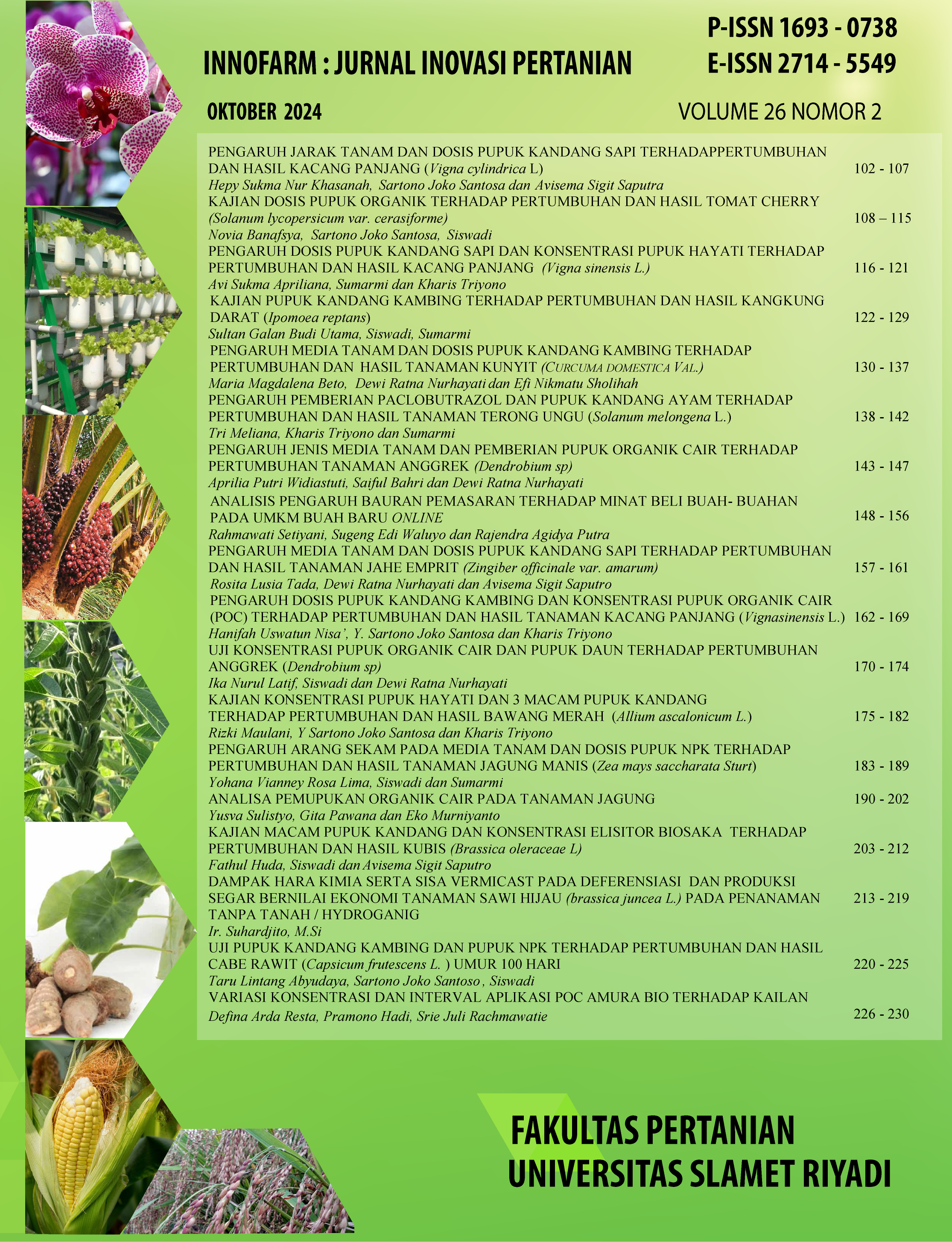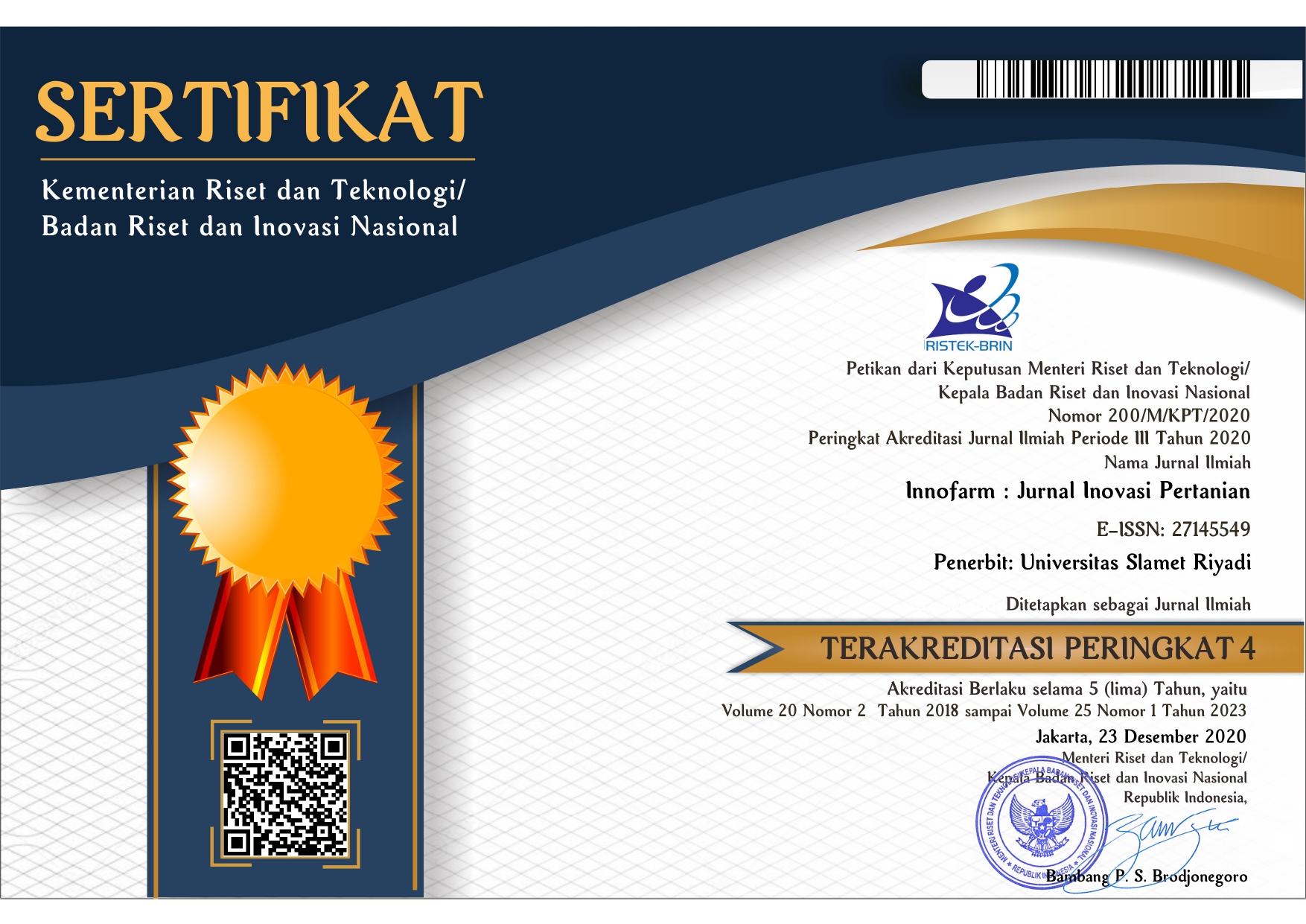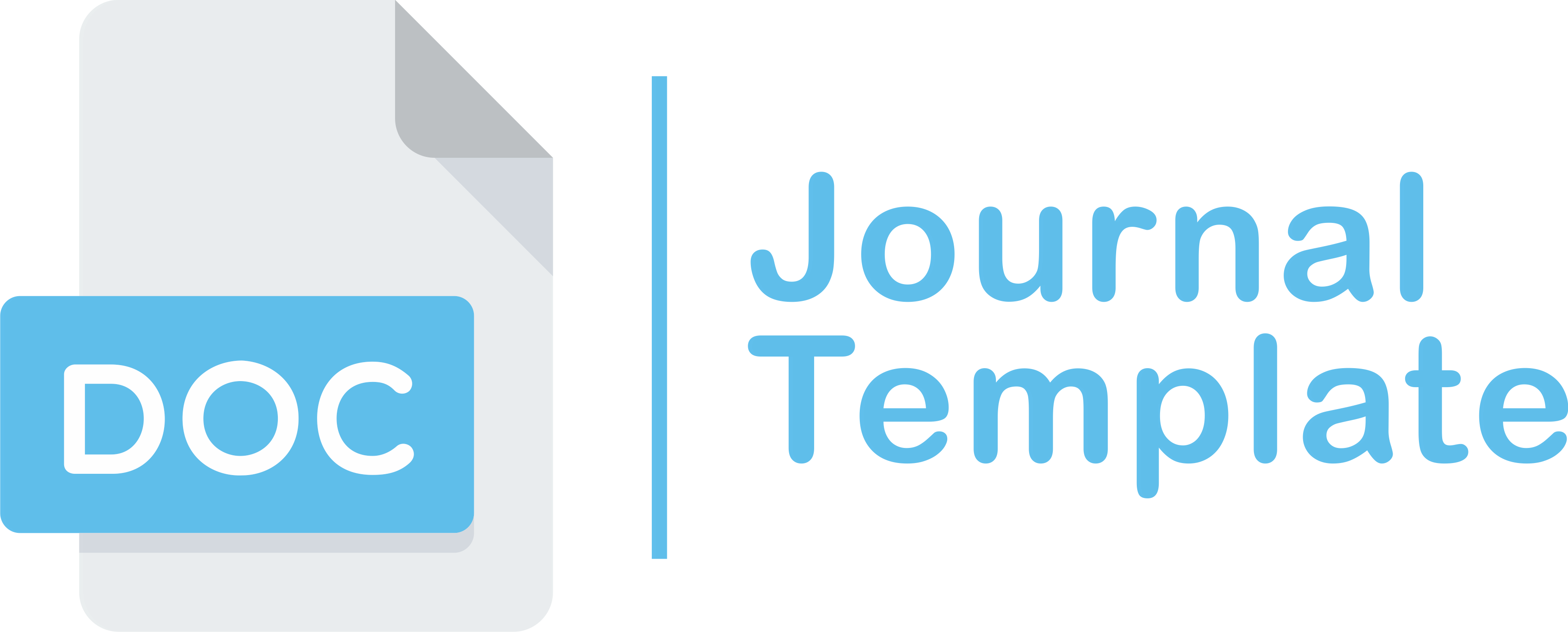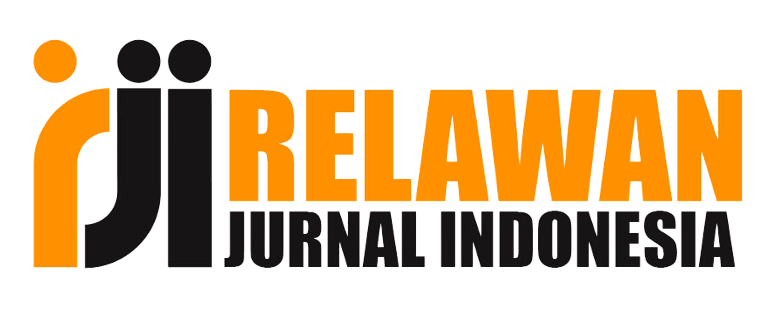STUDY OF ORGANIC FERTILIZER DOSAGE ON GROWTH AND YIELD OF CHERRY TOMATOES (Solanum lycopersicum var. cerasiforme)
Organik fertilizer, growth, cherry tomato
DOI:
https://doi.org/10.33061/innofarm.v26i2.11174Abstract
The research titled "Study of Doses of Organic Fertilizers on the Growth and Yield of Cherry Tomatoes
(Solanum lycopersicum var. cerasiforme)" sought to find out how different organic fertilizer dosages
affected cherry tomato (Solanum lycopersicum var. cerasiforme) growth and yield. The research was
carried out in the TPH Tohudan Seed Garden between December 2022 and March 2023. The
experimental design used was a fully randomized design (CRD) with a single factor pattern, with each
combination of treatments repeated 3 times. The parameters included three categories of organic
fertilizers: (1) Goat manure is available in three different quantities per polybag: 150 grams, 300 grams,
and 450 grams. (2) Chicken manure is available in three different quantities per polybag: 225 grams, 450
grams, and 675 grams. (3) Vermicompost fertilizer is available in three different quantities per polybag:
300 grams, 600 grams, and 900 grams. (4) There is also an option to choose no fertilizer. The
observational data were subjected to statistical analysis using analysis of variance (ANOVA), followed by
further tests using Honest Significant Differences (HSD) at a significance level of 5%. The parameters
that were recorded consisted of plant height, leaf count, stem circumference, branch count per plant, fruit
count per plant, fruit weight, and fruit diameter. The application of chicken dung at a dosage of 675 grams
per polybag produced the most favorable outcomes.
Downloads
Published
Issue
Section
License
Copyright (c) 2024 Novia Banafsya Banafsya, Sartono Joko Santosa, Siswadi Siswadi

This work is licensed under a Creative Commons Attribution-NonCommercial 4.0 International License.
Authors who publish this journal agree to the following terms:
- Authors retain copyright and grant the journal right of first publication with the work simultaneously licensed under a Creative Commons Attribution License that allows others to share the work with an acknowledgement of the work's authorship and initial publication in this journal.
- Authors can separately make additional contractual arrangements for non-exclusive distribution published by the journal (e.g., publish it in a book), with an acknowledgement of its initial publication in this journal.
- Authors are allowed and encouraged to send their work via online (e.g., in the institutional repositories or their website) after published by the journal.


















